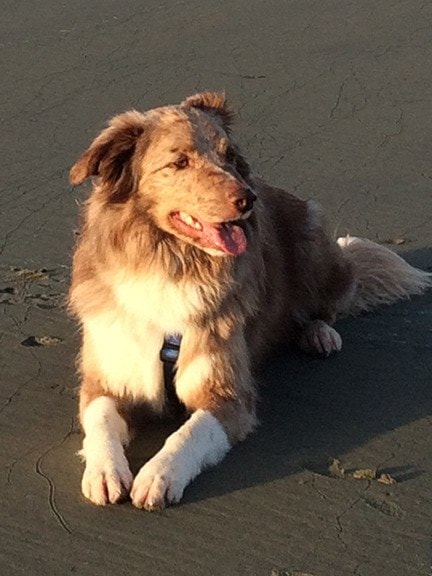At least three dogs have reportedly died over the last month after being in Quamichan Lake, and many are pointing at the toxic blue-green algae that is building up in the lake as the cause.
Dr. Lyn Pascoe, who lives on the lake, lost her six-year-old border collie Austin after he only dipped his legs in the water on Oct. 11.
She said Austin came out of the water with florescent-green algae on his legs that he may have licked at and ingested before she removed the substance with a thorough cleaning in the tub.
Pascoe said Austin began throwing up that night and went into seizures the next day before he finally died.
She said her veterinarian determined the cause of death to be liver damage.
Pascoe said she began making enquiries with her neighbours around the lake and found that two more dogs died, one on Sept. 26 and the other on Oct. 11, after being in Quamichan Lake.
Pascoe said she was aware that algae blooms sometimes occur in Quamichan Lake, but her dog has been in and around the lake many times before with no problems.
But she said she knew it was different this time because the algae was so hard to get off and was florescent.
“I went to the Municipality of North Cowichan and talked to [director of parks and recreation] Ernie Mansueti who immediately saw to it that signs were posted around the lake to warn people, and he said the municipality would work to notify all the property owners who are affected,” Pascoe said.
“I’ve also sent samples of the water to BC Aquifer [which does water inspections and tests] and it will take about 10 days to get the results. I’m wondering if the toxins could hurt humans and if it turns out that they can, then this should be considered a public-health emergency.”
Pascoe said the Quamichan Watershed Stewardship Society has also been informed, and will be meeting officials at the Municipality of North Cowichan early in November to discuss the issue.
Roger Hart is the chairman of the QWSS, which was formed in 2006 to respond to the continuously declining health of Quamichan Lake.
He said the cause of the problem is likely the amount of nutrients that have built up at the bottom of the shallow lake.
“It’s a combination of fertilizers making their way into the lake from agricultural sites on one side, and work on housing developments on the other side of the lake,” Hart said.
“The Cliffs over Maple Bay housing project [which was slated for the side of Mount Tzouhalem] was cancelled, but not before every bit of vegetation at the top of the mountain was cleared away, with much of the organic ground material making its way into Quamichan Lake.”
Hart said the health of Quamichan Lake has been going downhill for decades, and the fear now is that it has finally hit the tipping point.
He said settling ponds and bioswales, landscape elements designed to remove silt and pollution from surface runoff water, have been constructed around the lake over the years, with varying degrees of success. Hart said regular testing of the water by government agencies and municipal officials is not mandatory, so problems with lakes and ponds in B.C. often “fall through the cracks.”
However, he said the Capital Regional District has decided to regularly test a number of lakes within its jurisdiction that are having algae problems similar to Quamichan Lake, and North Cowichan could decide to do the same.
As for concerns that humans could face adverse health impacts, and even death, if they ingest or make contact with the water on the lake because of the algae blooms, Hart said he has lived next to the lake for 16 years and has watched people swim, canoe and eat fish from it without ever experiencing any problems.
“But it has never killed dogs before either,” he said.
Hart confirmed that society members have been asked by North Cowichan officials to attend a meeting to discuss the issue.
“I’m guessing the municipality will be looking for a quick fix for the problem, and there may be some options available,” he said.
“One involves ultrasonic algae removal which is now being done by a Dutch company, and another approach is to add certain compounds to the lake that would halt the production of algae. There may be some long-term solutions as well, and some biologists believe algae levels will decrease on their own if the flow of nutrients into the lake was significantly reduced.”
Jon Lefebure, mayor of North Cowichan, said algae blooms have occurred in Quamichan Lake a number of times over the last few years, and acknowledged that fertilizers from nearby farms and runoff from housing developments are playing a part.
He said the upcoming meeting with the QWSS is intended to assess the situation and try to find solutions.
“We have no plan in place at this time, but water issues such as this are part of North Cowichan’s town hall meetings on the budget for 2017,” Lefebure said.
“One of the questions on the survey that we are having people fill out is if residents want more money from the budget allocated to improve water quality at Somenos Lake and Quamichan Lake.”
Lefebure said if the toxins in the lake are above safety levels, it is usually Island Health that does the appropriate tests and informs the municipality and the public.
